Brands - Headline
"The ‘2020 Asia's Top 500 Brands’ list, as an important achievement of the 15th Asian Brand Gala, was grandly released at the 15th Asian Brand Gala. With the brand value evaluation system developed by Asia Brand Group, the list has been released for 15 consecutive years, and has become an important reference for government management, institutional investment, corporate strategy formulation and optimization of resource allocation.

Zhou Jun, Executive Vice Chairman of ABAS Expert Committee, made the list release
Alibaba, Huawei, Industrial and Commercial Bank of China (ICBC), Tencent, Toyota, Ping An, Samsung, China Construction Bank, Sony, and China Life are among the Top 10 of the “2020 Asia's Top 500 Brands”.
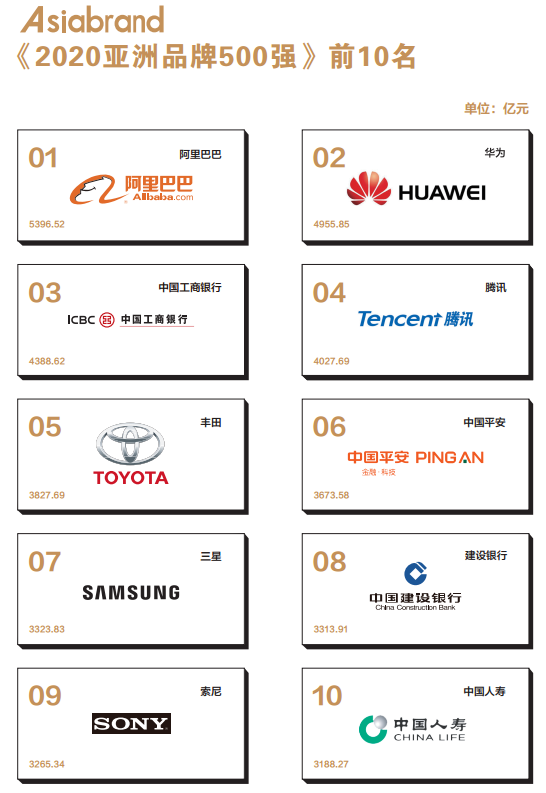
★ Analysis of the world and Asian economic situation ★
The world economy grew by 2.9% for the full year 2019, the lowest level in a decade. Economic growth rates in major economies have all declined. According to the International Monetary Fund IMF data, the world GDP growth rate in 2019 decreased by 0.6 percentage points compared with 2018. Among them, the GDP growth rate of developed economies in 2019 was 1.7%, down 0.6 percentage points from 2018; the GDP growth rate of emerging markets and developing economies was 3.9%, also down 0.6 percentage points from 2018.
Among the major developed economies, except for Japan, all other economies experienced a significant decline in growth. 2019 U.S. GDP growth of 2.4%, down 0.5 percentage points from the 2018 growth rate. Eurozone GDP grew by 1.2%, down 0.7 percentage points from the 2018 growth rate. GDP growth in the UK and Canada fell by 0.2 and 0.4 percentage points respectively from 2018. Japan's economy remains in the doldrums, with GDP growth of 0.9% in 2019, but a slight recovery of 0.1 percentage points from 2018.
Emerging markets and developing economies also saw a general decline in economic growth in 2019. While the emerging economies in Asia maintained the highest growth rate in the world, with GDP growth of 5.9% in 2019, the growth rate was still 0.5 percentage points lower than the previous year. China's GDP growth rate declined from 6.6% in 2018 to around 6.1% in 2019, India's GDP growth rate declined from 6.8% to 6.1%, and the overall GDP growth rate of the ASEAN-5 countries of Indonesia, Malaysia, the Philippines, Singapore, and Thailand declined from 5.2% to 4.8%. Economic growth in the Emerging and Developing Europe region continues to decline significantly in 2019, with GDP growth declining from 3.1% in 2018 to 1.8% in 2019. The Middle East and North Africa (MENA) region suffered from geopolitical conflicts and lower oil prices, resulting in a decline in GDP growth from 1.9% in 2018 to 0.9% in 2019. Sub-Saharan Africa's economy is relatively stable, with GDP growth of 3.2% in 2019, unchanged from 2018.The challenges facing the world and Asian economies will be more challenging in 2020. Short-term factors stem mainly from the new Crown Pneumonia outbreak and the continuation of unilateralism and protectionism. The New Crown Pneumonia epidemic has had a huge impact on the world economy, including Asia, and the global supply chain and industrial chain are at risk of disruption. Meanwhile, the Trump administration's unilateralism and protectionism policies continue unabated, severely inhibiting global trade and investment exchanges and greatly affecting the international division of labor and investor confidence. Medium-term factors mainly stem from the diminishing effects of monetary and fiscal policies in the world and Asian countries, especially in developed economies. Long-term factors mainly stem from the lack of labor productivity growth, which has a dampening effect on investment demand.
With regard to the global economic and financial situation, the United States, Europe and Japan, the economy was hit by the epidemic is more serious, signs of economic recovery in the short term difficult to appear. The U.S. Department of Commerce previously released data showing that the U.S. GDP in the second quarter plunged 32.9%, the largest drop since the 1940s. U.S. stocks in March suffered four meltdowns, rare in history, compared with the high point of the year retraced about 30%, the end of the 11-year-long bull market. The decline in the stock market directly impacted U.S. consumption, social isolation further triggered supply chain disruptions, business investment and residential consumption decline, while the market for the U.S. government's effectiveness of preventive and control measures there are still greater doubts; eurozone GDP in the second quarter fell by 12.1% on a year-on-year basis, a sharp drop of 8.5 percentage points compared with the previous quarter, marking the largest quarterly decline since 1995 when there were statistical records. EU27 GDP fell by 11.9% from a year earlier, a drop of 8.7 percentage points. The eurozone economy plunged into the depths of an unprecedented recession in the second quarter, which may take years to fully recover. Recently, the economic recovery process of European countries is being threatened by the rebound of the global epidemic, and strict nationwide closure measures have been widely adopted to avoid secondary shocks to the economy. However, the continued social distance measures on consumption to produce a serious drag, Italy, Spain, Greece and other member states relying on tourism economy, the economy may be worse; Japan's second quarter of the current year, real GDP than the previous quarter fell by 7.8%, converted to the adult rate for a decline of 27.8%, the rate of decline in the worst post-World War II record. Japan's Cabinet Office report, accounting for about 60% of the country's economy, personal consumption in the second quarter fell 8.2% from a year earlier, down much higher than the first quarter of 0.8%. Horizontal comparison, Japan's economy in the April-June quarterly contraction from a year earlier, although smaller than the U.S. and European economies, but worse than most Asian countries.
★ Background on the list ★
The world has now entered the era of brand economy, and competition in all areas of the global market has become increasingly focused on brand competition. Therefore, only through quality, service, independent innovation and branding can we take the initiative in global economic competition. Although China is the world's second largest economy and the largest manufacturing country, but due to the long-term lack of core technology and brand awareness, resulting in brand development seriously lagging behind economic development, Chinese brands in the global value chain is still at the bottom of the “smile curve”. The strategy of strong brand is put forward in such a serious period. With the promulgation of the 10-year action program of “Made in China 2025” and the implementation of the “13th Five-Year Plan”, the strategy of strong brand has become a key strategy for the country to adjust the direction of economic development.
In 2014, General Secretary Xi Jinping put forward the important thesis of “three transformations” with the overall height and global vision, that is, “promoting the transformation of Made-in-China to Created-in-China, the transformation of China's speed to China's quality, and the transformation of China's products to China's brands”. General Secretary Xi's exposition profoundly grasped the brand building and structural transformation and upgrading of the relationship between the promotion of China's industrial structural transformation and upgrading, to build China's brand pointed out the direction, goals, tasks and path, has a significant and far-reaching significance. Since then, the state has intensively issued a series of policies and regulations to clarify the leading position of brands in economic development, and put forward a series of specific brand-strengthening guidelines. 2017 May 2, the State Council approved and agreed that from 2017 onwards, May 10 every year will be set up as “China Brand Day”. At the national level, it is clear to play a leading role in branding, promote the structural reform of the supply side, and meet the needs of high-quality development and the construction of a better life. Since then, the curtain of China's brand economy has opened.
On December 15, 2019, CCTV's “2019 China Brand Power Ceremony” aims to see the road of China's brand power from the road of China's brand development, carry forward the spirit of typical enterprises to build China's brand, and create an atmosphere for the whole society to enhance the competitiveness of China's brand, so that the importance of brand building for the country can be seen On December 18, 2019, the People's Daily “China Brand Development Index” was officially released, initiated and compiled by the People's Daily. It is pointed out that brand as the core element, driving the development of the economy of the advanced economic form, representing the direction of the upgrading of the supply structure and demand structure. Marking the brand as the core of the high-quality economy will become China's largest driving force to achieve economic system reform, China's brand building has ushered in unprecedented development opportunities.
Since entering 2020, the new crown pneumonia epidemic has begun to spread globally. The economic powers in Europe and the United States, which originally led in brand value concept and market recognition, have experienced extreme economic contraction due to the impact of the epidemic, and brand capital and brand enterprises have also suffered a downturn. In contrast, China's epidemic prevention and control is strong, the economic recovery is strong, China's brand awareness and innovation consciousness in the game with the United States in the process of gradual enhancement of Chinese enterprises in the field of technology began to seek breakthroughs inward, the overall development of the brand more and more close to the essence of the brand. Under this contrast, Chinese brands will usher in unprecedented development opportunities, which will become the key to reversing China's brand deficit and reshaping the industrial landscape. Under such an overall background, promoting the development of brand economy has become a necessary strategic choice for realizing high-quality development and building a better life. Taking brand as the core, condensing brand resources, integrating various innovation elements, and guiding enterprises to correctly carry out brand building investment is the key to accelerating the breakthrough of promoting the transformation of “China's speed to China's quality, China's manufacturing to China's creation, and China's products to China's brands”, and also an important path to improve the quality of the supply system and enhance the quality advantage of the economy, as well as an important path to realize the greatness of the Chinese nation. It is also an important path to improve the quality of the supply system and enhance the quality advantage of the economy, and it is the key to realizing the great rejuvenation of the Chinese nation.
The year 2020 is the final year of the “13th Five-Year Plan”, and it is also the year of acceptance of the stage-by-stage development of brand economy, to which the state attaches great importance. In this special historical period, in order to further promote China's brand building, play a leading role in branding, promote economic transformation and upgrading, sustained and healthy development, and cater to the national brand program, Asiabrand, a professional brand evaluation organization, with 15 years of brand service experience and advanced Asiabrand 3.0 technology, has selected 500 companies with the highest brand value from a large number of Asian enterprise brands, and formed the “2020 Asian Brand 2020” branding program. companies from a large number of Asian corporate brands to form the “2020 Asia's Top 500 Brands” list. By evaluating and analyzing the value of these outstanding brands, we can see the changes in Asia's economic structure, the overall brand strength, and the development trend of various industries, and at the same time, we can find out some of the problems that still exist in Asian brands and put forward relevant suggestions for improvement, with a view to enhancing the brand awareness of enterprises and helping to
★ Brand value evaluation system ★
1.Overview of brand value evaluation techniques
In order to more accurately quantify brand value and highlight the effectiveness of corporate branding, Asiabrand, a professional brand evaluation organization, has upgraded and iterated its evaluation technology on the basis of Asiabrand 2.0 evaluation technology and launched Asiabrand 3.0 brand evaluation technology with more application value. The evaluation method follows the basic principle of “divesting brand costs, determining brand assets, calculating brand contributions, clarifying brand relationships, and evaluating brand value”, and takes the four original elements of brand value, namely, “value concept, differentiation strategy, customers, and products” as the basic starting point. With the four primary elements of brand value “value concept, differentiation strategy, customers and products” as the basic starting point, we have formed the “Brand Evaluation 3.0 Model” that can comprehensively respond to the construction and development of corporate brands by qualitatively and quantitatively analyzing the sensitive elements in the aggregation and set of variables of the relationship between the family groups of the pointing roles of various types of derivatives of brand management elements and supplemented with the quantitative method of brand value based on the income method, and we strive to It is also supplemented by the quantitative method of brand value based on the income method, which strives to more objectively and scientifically evaluate the efficacy of corporate brand assets and the current value of the brand, and to provide valuable reference for the future brand construction of the enterprise.
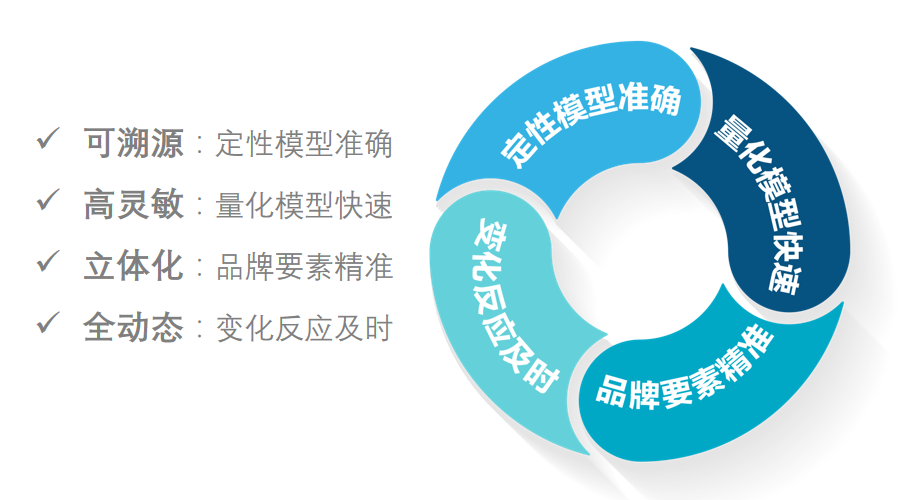
2. Brand value evaluation model and method
Brand Evaluation 3.0 Model: A three-dimensional structural model that can accurately measure brand equity, accurately calculate brand contribution and reasonably predict brand revenue, consisting of four points of origin, six lines of relationship, four dimensional surfaces and twelve fixed corners of the brand. With brand relationship as the core, the model contains 98 primary indicators, 125 secondary indicators and 169 tertiary indicators. With the pulse analysis of the points and lines constituting the surface and the balance analysis of the fixed base angle, the model can clearly understand the basic factors and dimensional components determining the comprehensive strength of the enterprise brand in turn, forming the basis for brand value analysis and evaluation. The model is dynamic, three-dimensional, monitorable and traceable. It can not only provide useful information and dynamic intervention for enterprise brand building, but also improve the financing environment of enterprises and provide support and guarantee for the realization of enterprise brand assets.
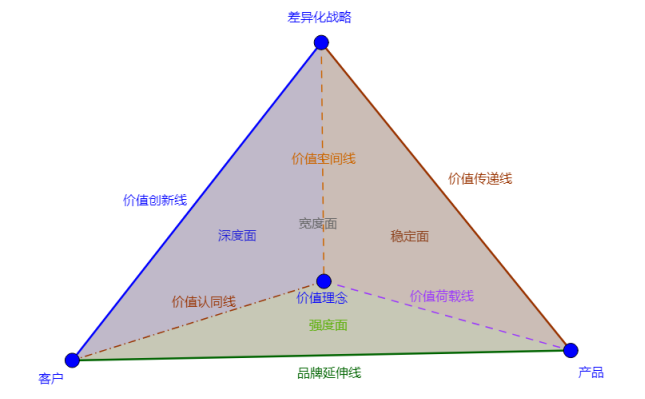
Earnings Approach: An evaluation method that determines the value of a brand by forecasting its future earnings and capitalizing or discounting the expected earnings of the brand.
3. Advantages of the brand value evaluation model
(1) More advanced concept: Asiabrand 3.0 evaluation model focuses on the definition of brand from the economic point of view: brand is a value relationship that exists in the competition of commodities with clear ownership, which can bring long-term excess returns for enterprises. The evaluation concept focuses on the study of the value relationship constituted by the brand, which is qualitative and more conducive to the quantification and analysis of brand value;
(2) More accurate value: Asiabrand 3.0 evaluation model starts from brand assets, the starting point of brand value, and through the accurate measurement of brand assets and related analysis of brand asset efficacy, the calculated brand value has a strong dependence and is closer to the market value, which can become the pricing basis for brand transactions and promote resource allocation guided by the brand of the enterprise;
(3) More obvious role: Asiabrand 3.0 evaluation model has a wider range of data collection ports, including enterprise industrial and commercial information, financial data, intellectual property data, market data, public opinion data, customer data, enterprise credit data, capital market performance data and other related data, so that the brand evaluation is truly detached from the constraints of the accounting system and financial statements, and it provides a basis for enterprises to improve their financial structure. (4) Evaluation is more objective;
(4) More objective evaluation: The Asiabrand 3.0 evaluation model is a brand evaluation technique that classifies the basic attributes and derivative attributes of the original brand elements, uses correlation analysis to categorize the relevant variable factors, assembles the qualitative factors in the variable relations, generates the numerical correlation relationship of the sensitive elements and determines the numerical values of the correlation relationship by analogy. The whole calculation process is free of human intervention and subjective judgment, relying entirely on objective data, in order to achieve scientific, objective and fair evaluation results.
(5) More comprehensive analysis: Asiabrand 3.0 evaluation model has strong value diagnosis and value analysis functions. Asiabrand 3.0 evaluation model is a three-dimensional structure with point definitions, line indicators, surface dimensions and corner bases. According to the structure of the model and the definition of indicators, together with the analysis of the pulse of the surface composed of points and lines and the analysis of the balance of the angle of the fixed base, we can clearly understand the basic factors and dimensional components that determine the comprehensive strength of the enterprise brand in turn, and we can comprehensively analyze the problems of the enterprise's branding, and generate relevant recommendations for improvement.
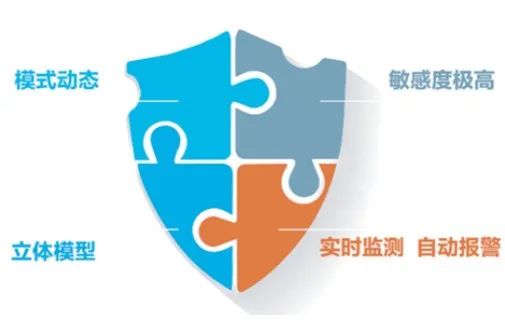
(6) Dynamic monitoring: Asiabrand 3.0 evaluation model contains four systems: brand value monitoring system, brand credit management system, public opinion monitoring system, and big data monitoring system. After the evaluated enterprise's fixed base indicators and fixed base model are determined, online monitoring will automatically review and verify the changes of the fixed base model's angle and line based on the enterprise's dynamic and sensitive indicator data. When the review data changes, it will trigger the changes of the fixed base model's points or lines, thus causing the deformation of the fixed base model, and when the deformation dimension exceeds the established range, it will trigger the corresponding system to report to the police. This functionality is also the basis for Asiabrand's promotion of brand finance.

unfinished business to be continued
★ Attachment: List ★

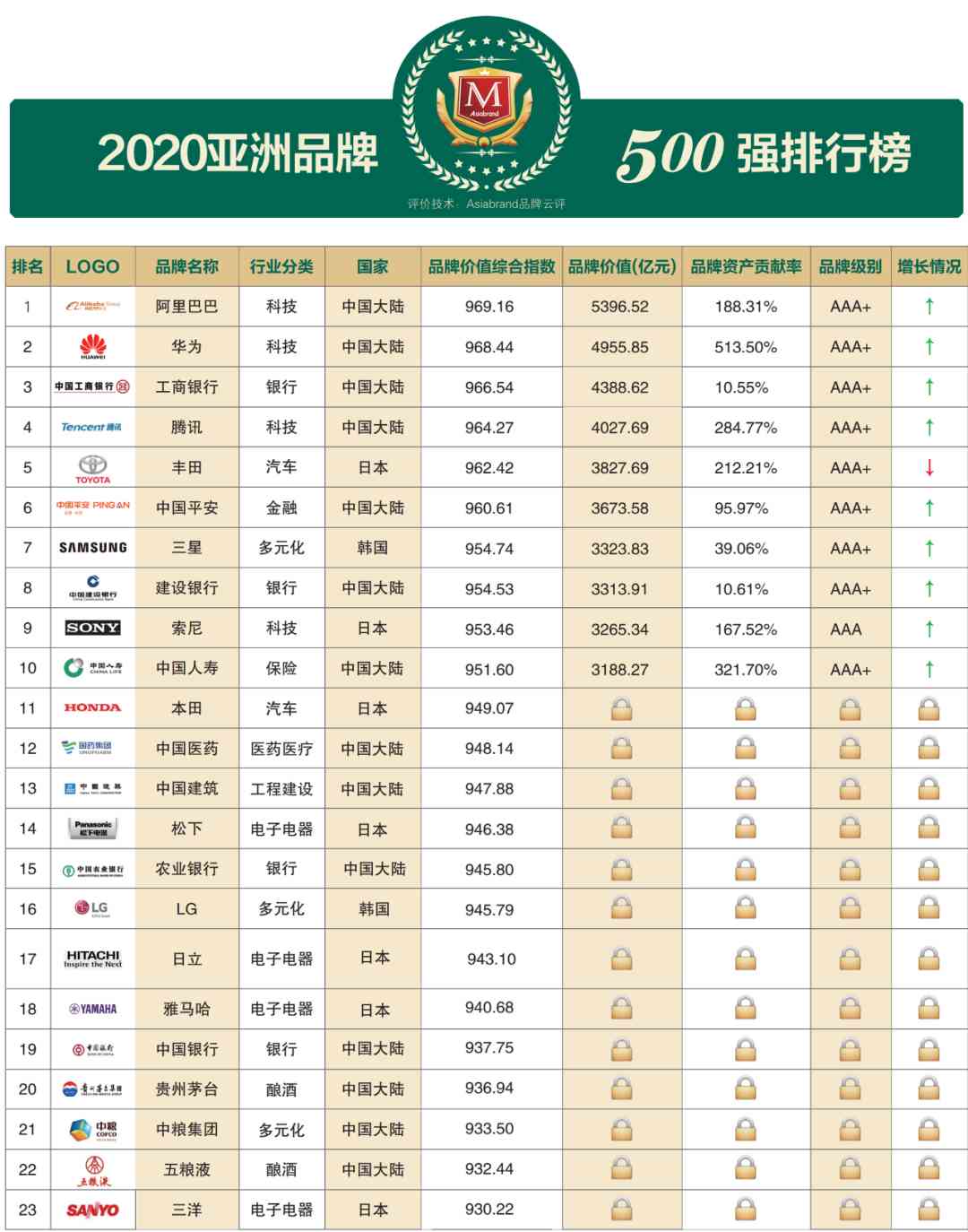
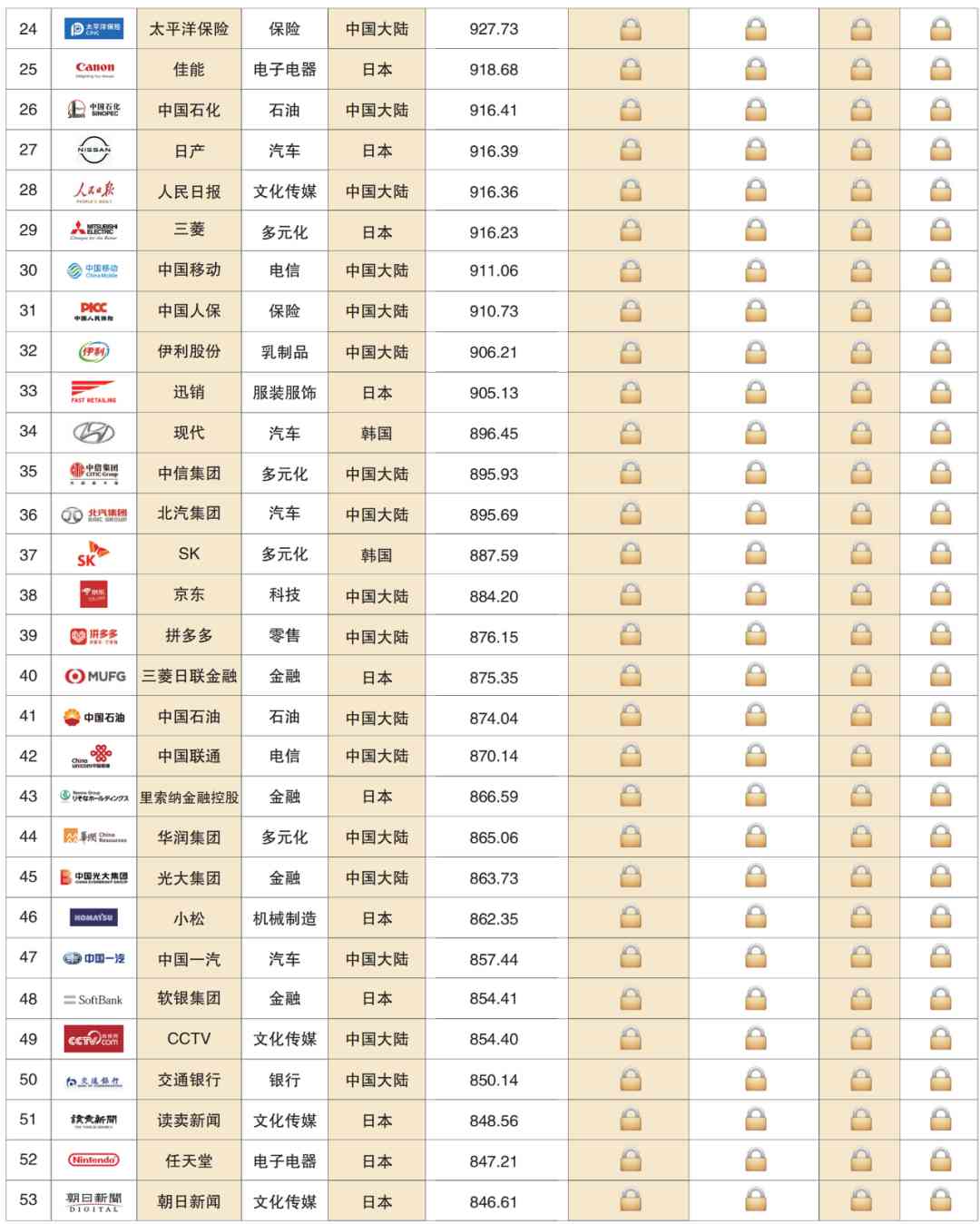
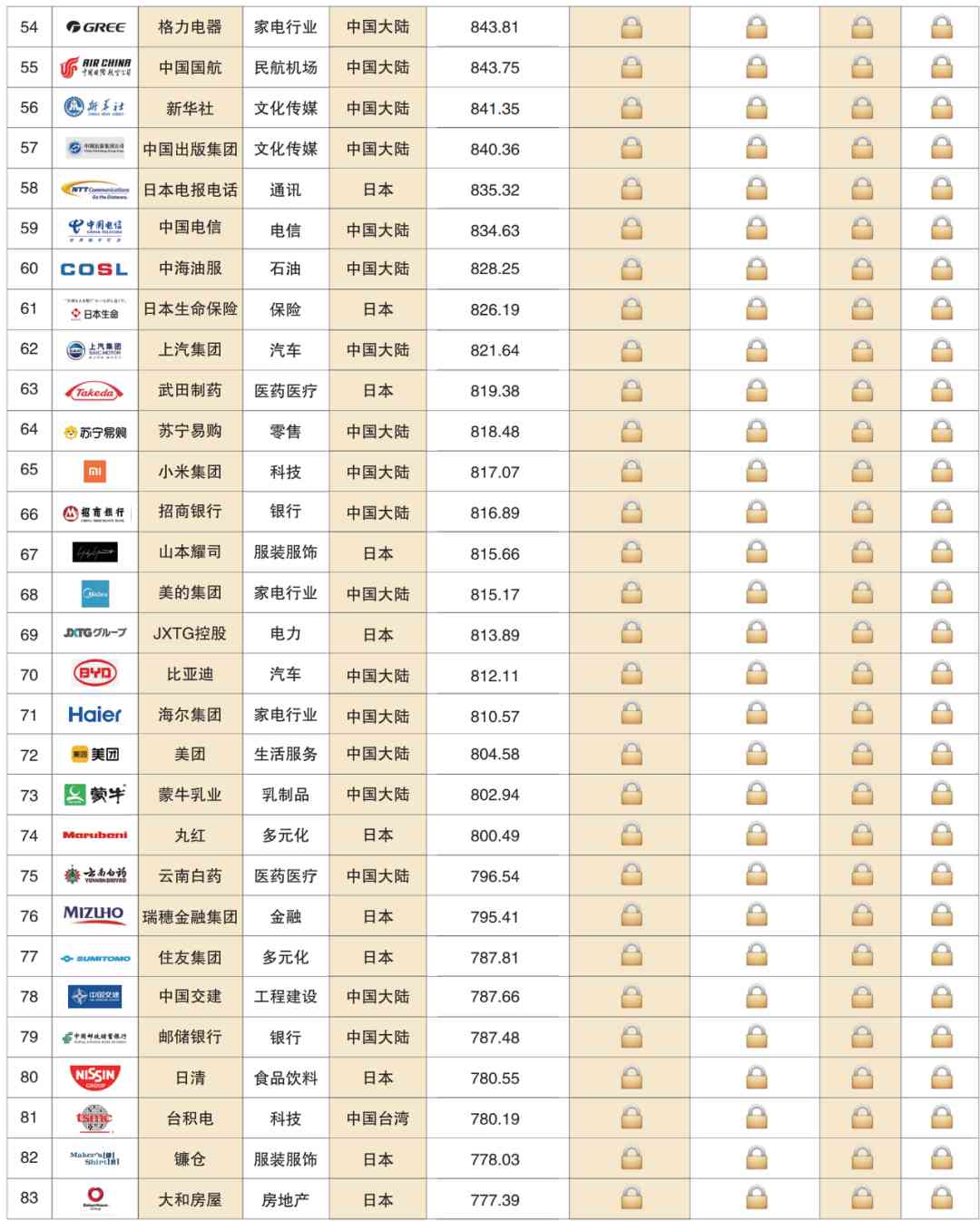
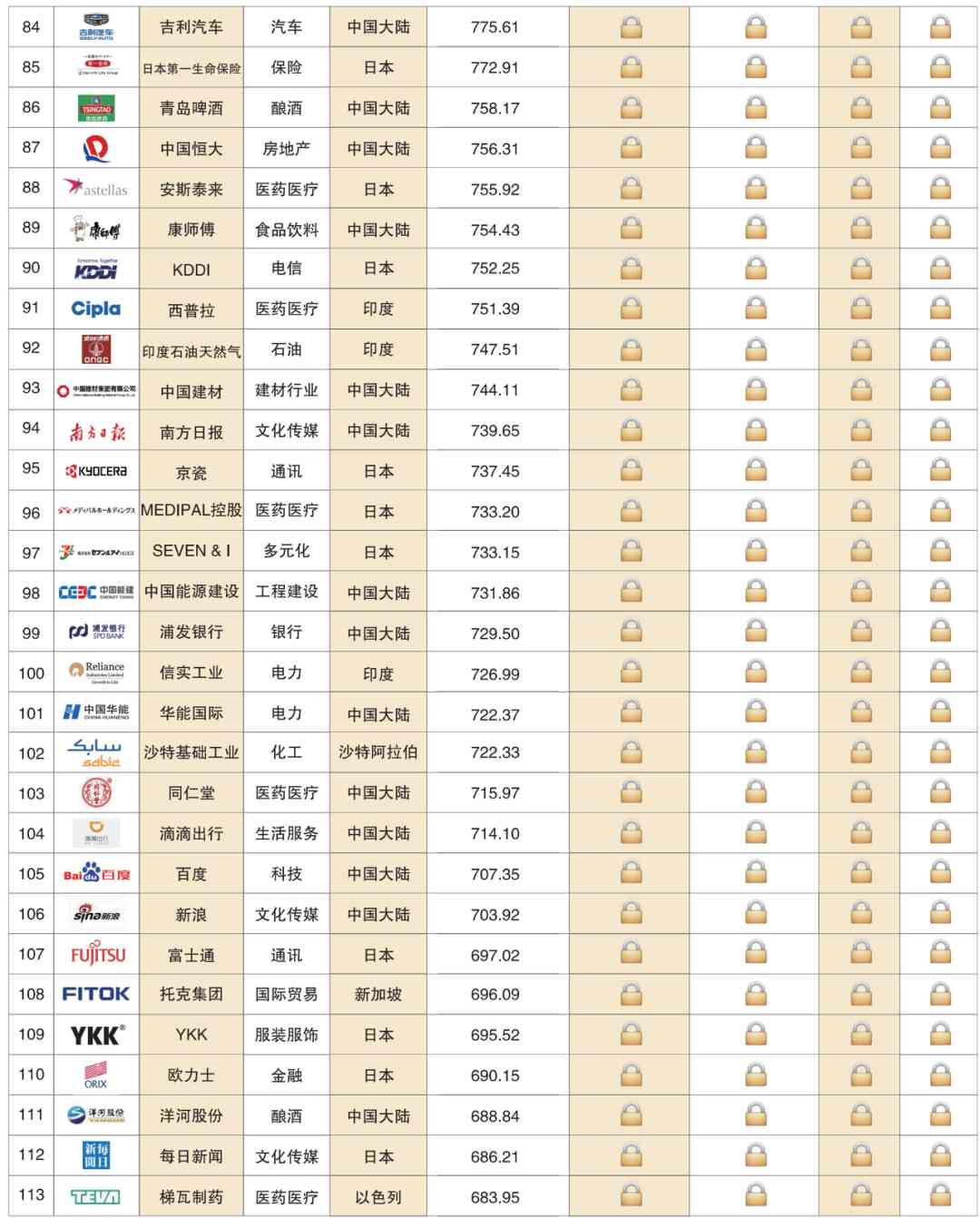



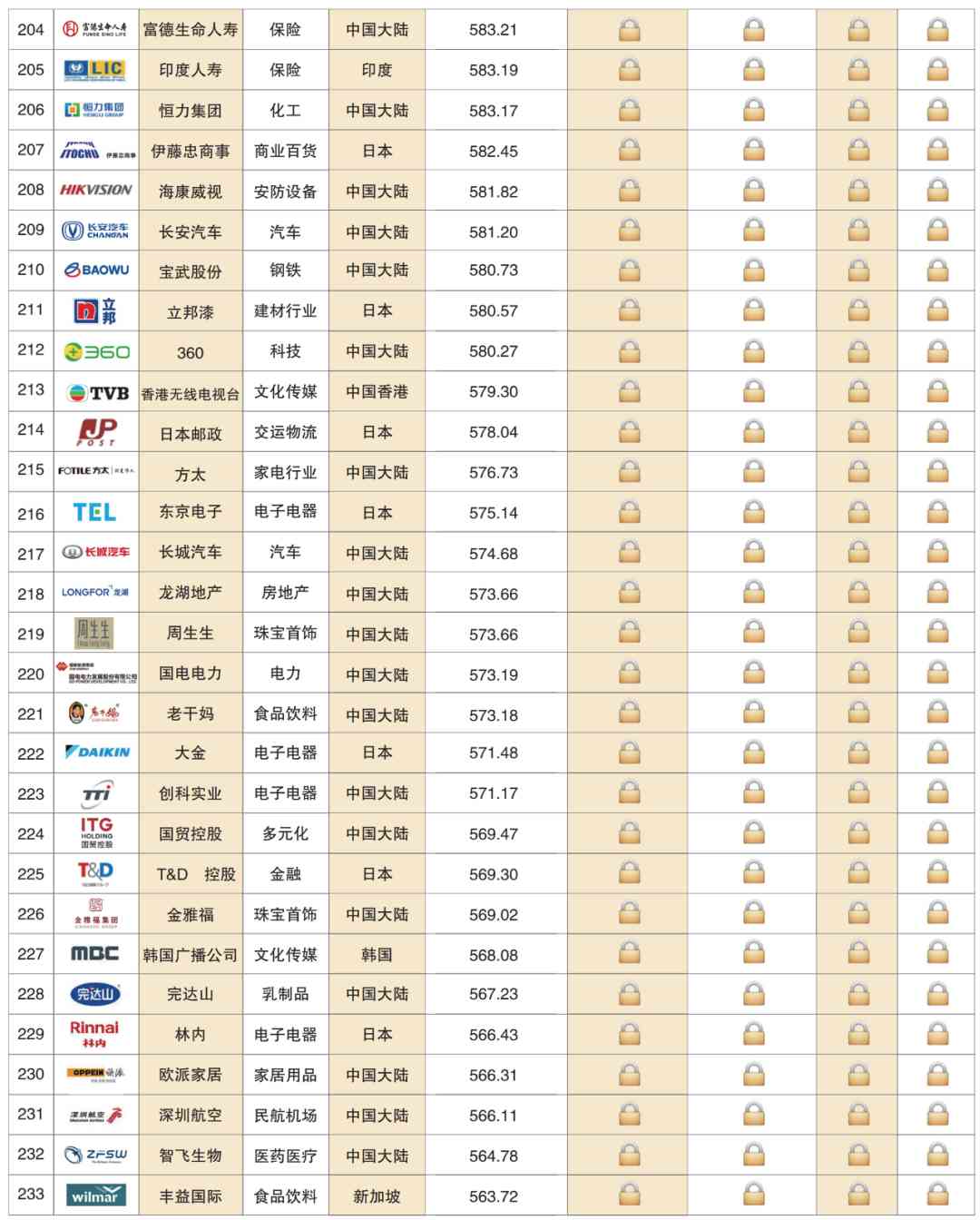
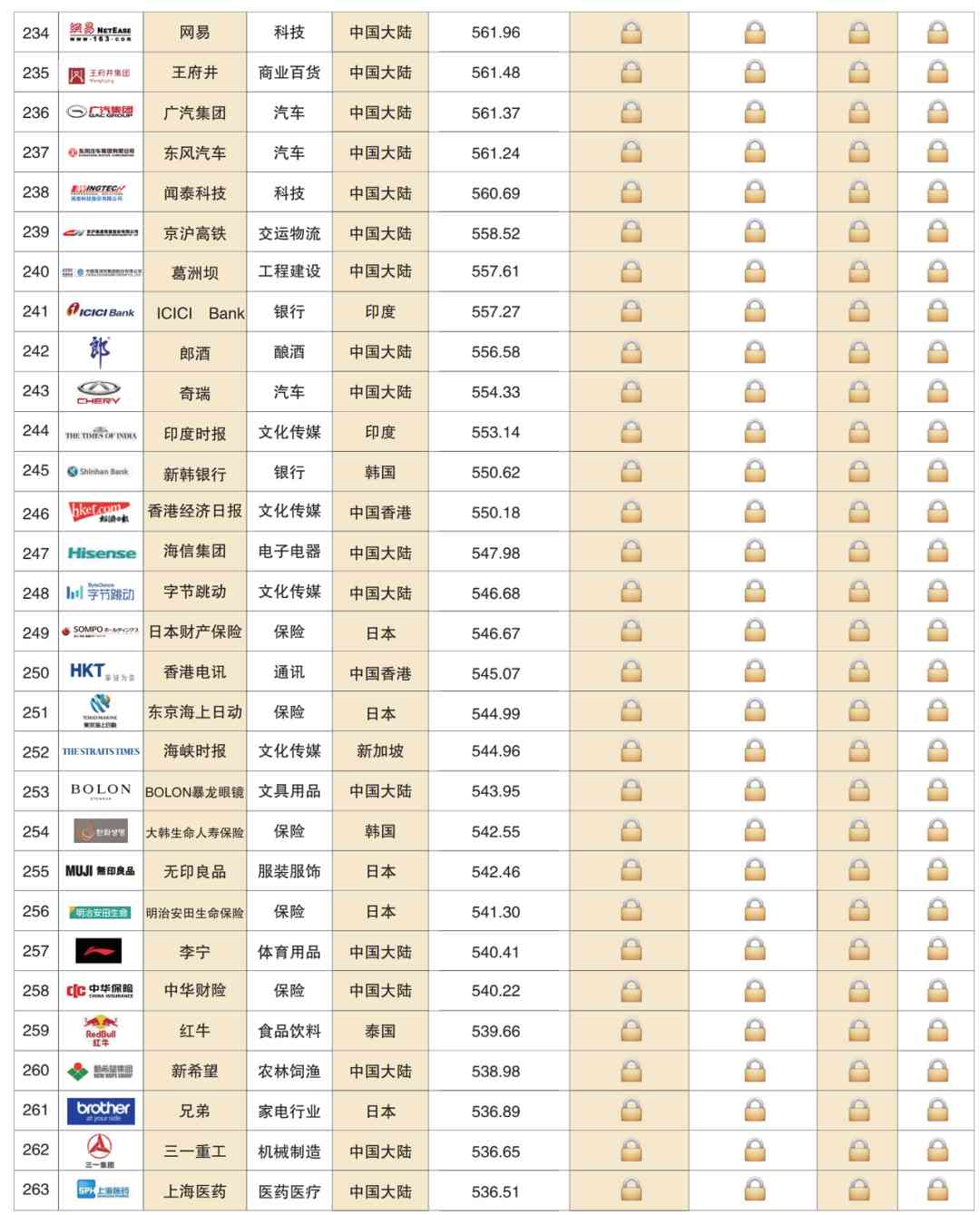

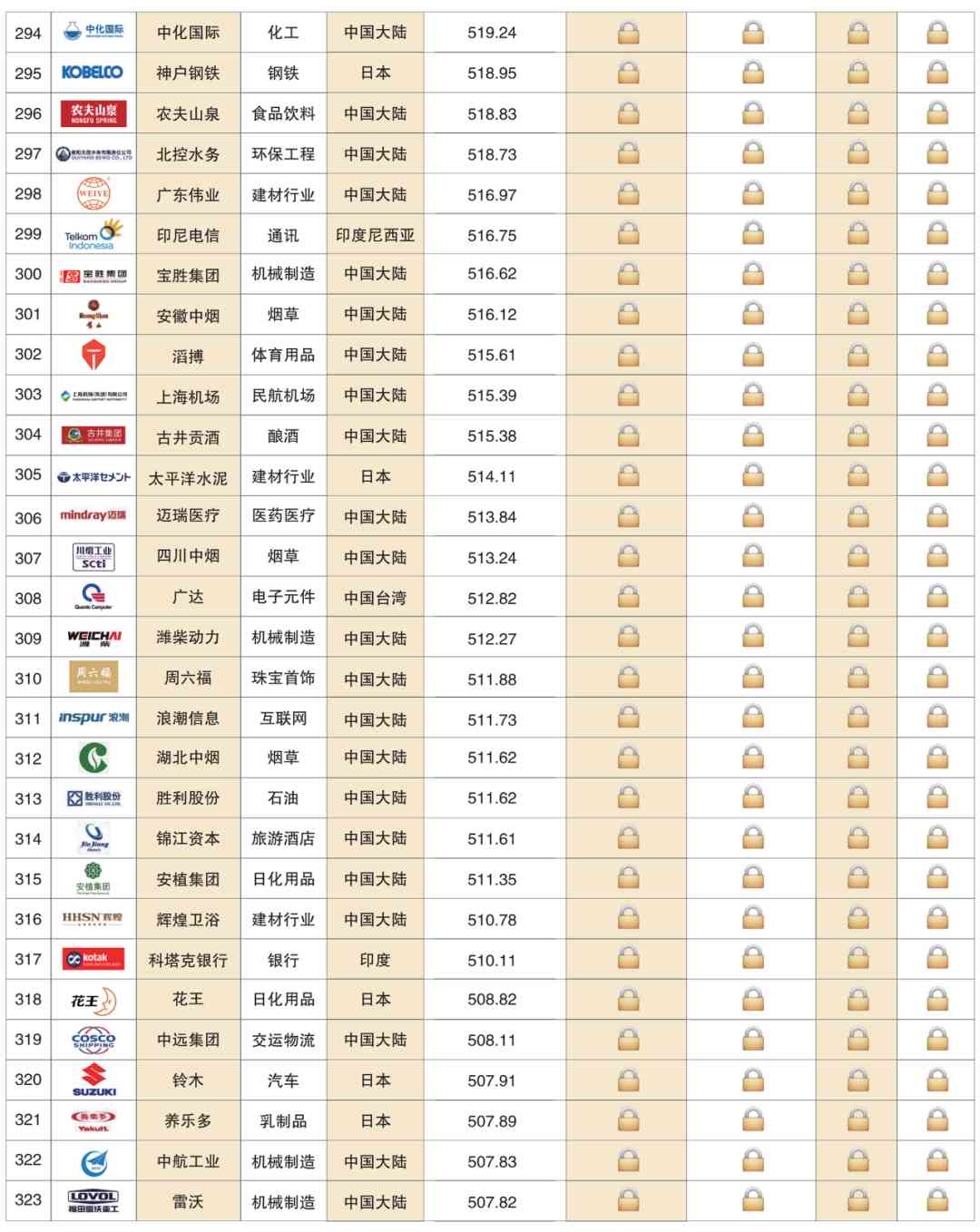
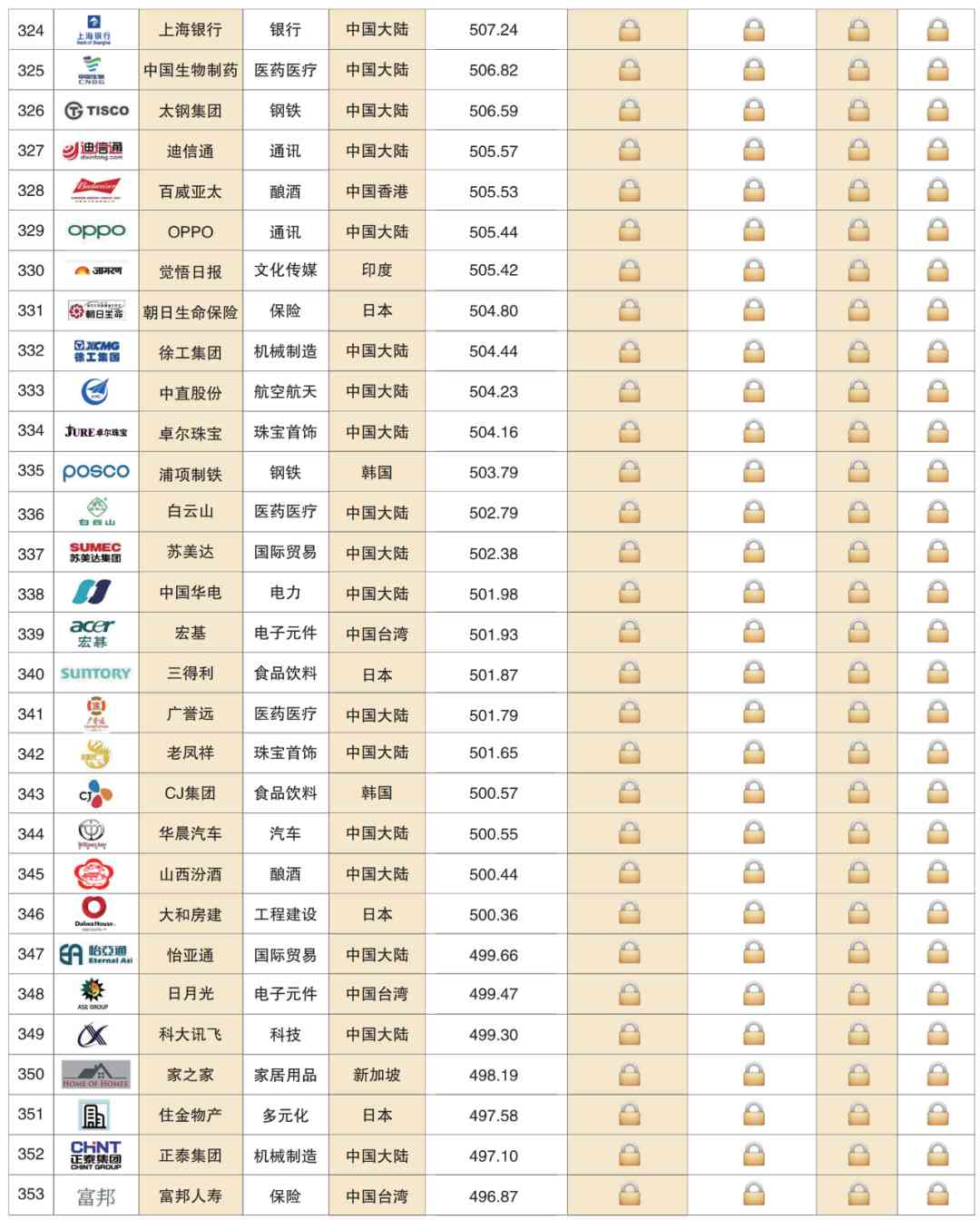
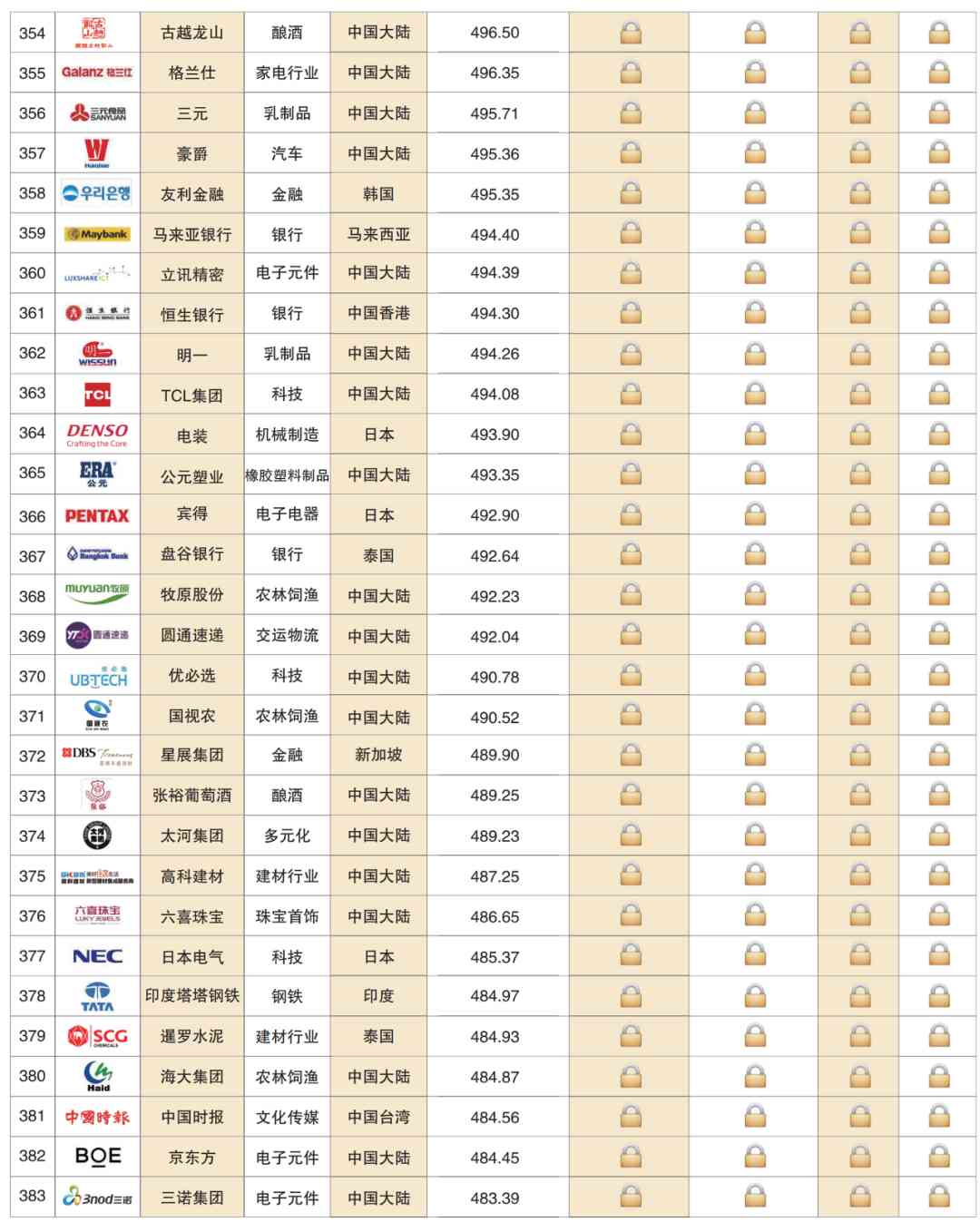

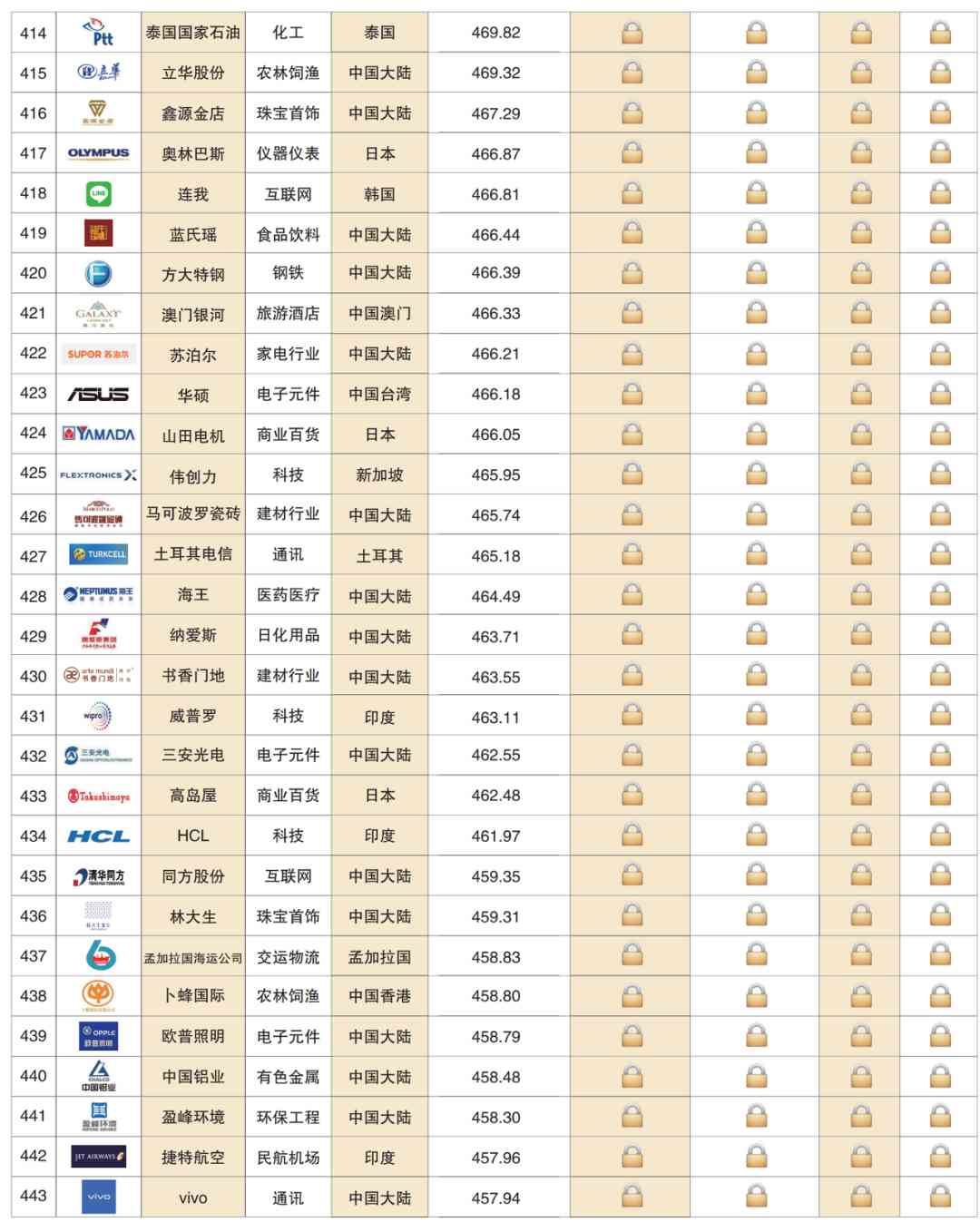


Asiabrand
Asiabrand, a subsidiary of Asia Brand Group, is a professional brand value systematic service organization. Founded in 2005 in Beijing, with Asia Brand Academy, ABAS Expert Committee and other scientific research institutions as its think tank, and new brand, new technology and new finance as its development strategy, the company carries out three core businesses of brand evaluation, brand value-added and brand financial services, and builds a financial ecological chain of brands with all its strength; it owns a number of proprietary intellectual property rights, patented technologies and independent scientific research achievements in brand evaluation, and has been awarded the qualification of national high-tech enterprise and Zhongguancun high-tech enterprise. It has been awarded the qualification of national high-tech enterprise and Zhongguancun high-tech enterprise.
At the end of 2019, the company will launch the “PinXinBao” brand credit platform for small and medium-sized micro-enterprises, which is based on the Asiabrand Brand Value Evaluation 3.0 technology, and provides brand credit funds and value-added management for small and medium-sized micro-enterprises through the exclusively-developed Brand Value Management System (BVM).

